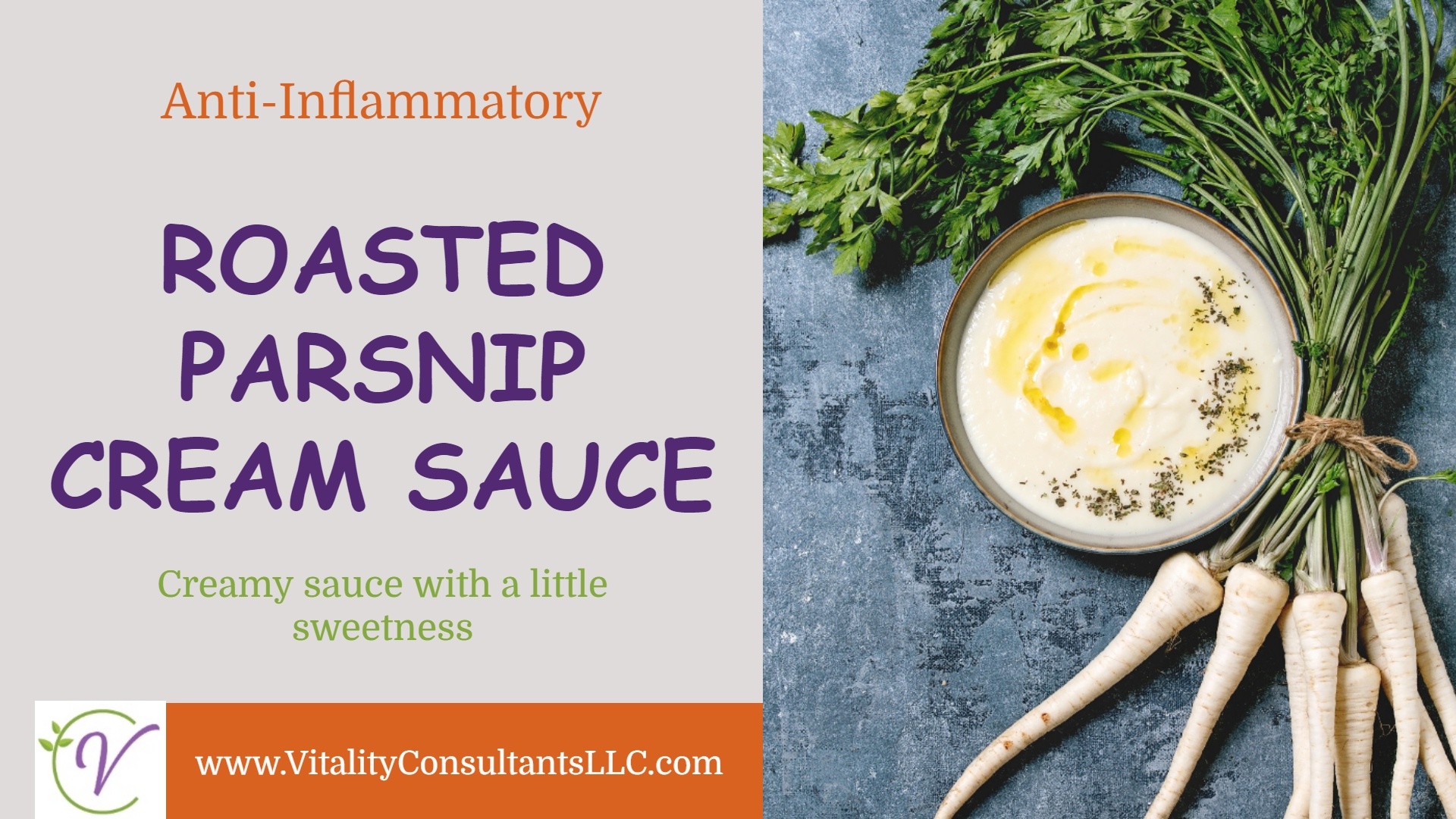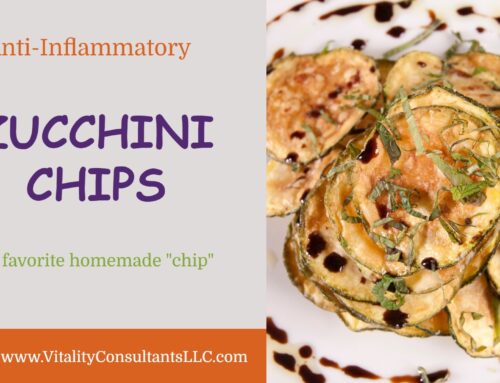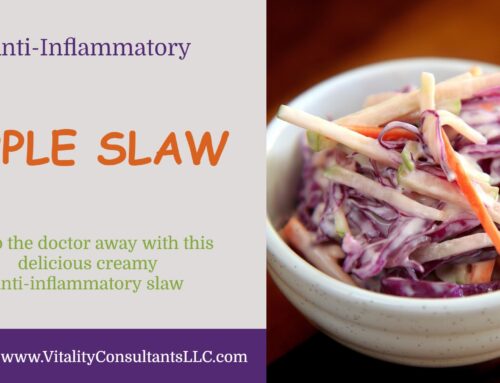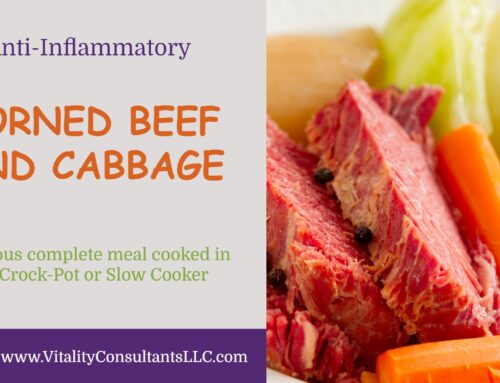Parsnips are sometimes referred to as the “forgotten vegetable” since they’re often overshadowed by their flashier relatives. This humble root vegetable offers a wealth of benefits and benefits to health. So, it’s time to give them some well-deserved attention. Here’s everything you need to know about parsnips.
What Are Parsnips?
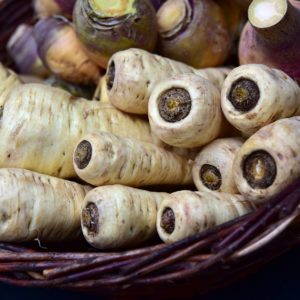 The parsnip is one of the most versatile winter vegetables. It can be cooked like a carrot or mashed up in the place of potatoes. In fact, it’s often eaten at Thanksgiving because it complements other holiday dishes. Because of their mild flavor, they also make a good addition to soups.
The parsnip is one of the most versatile winter vegetables. It can be cooked like a carrot or mashed up in the place of potatoes. In fact, it’s often eaten at Thanksgiving because it complements other holiday dishes. Because of their mild flavor, they also make a good addition to soups.
Parsnips are biennial, meaning they take two years to mature from seed to harvest. In its first growing season, the parsnip produces green leaves. If it is left unharvested by its second growing season, the plant sprouts yellow flowers. By this point, though, the root is mostly inedible.
Parsnips vs. Carrots
In the modern age of science, the ability to identify what something is and to be able to determine its origin is a real advantage. Sometimes it can be hard to tell the difference between two different things that look alike. For instance, there is a certain amount of confusion in the vegetable market over parsnips and carrots, because they are often mistaken for each other. But while the two are both roots, they are not closely related. The roots of parsnips come from the root of the plant and are long, thin, and slender, while the roots of carrots are more like stubby little fingers.
Both parsnips and carrots have a unique sweetness about them. In fact, the parsnip was actually used as a pre-cane sugar sweetener in Europe. However, some flavor nuances separate one from the other, such as the parsnip being slightly spicy while the carrot has a winter squash flavor.
What Do Parsnips Taste Like?
There’s a lot to take in when you bite into a parsnip. The flavor is starchy like potatoes, sweet like carrots, and bitter like turnips.
The parsnip is an easy root vegetable to cook and is delicious either roasted, sauteed or steamed.
Parsnip Nutrition
Parsnips are good sources of antioxidants, vitamin C, vitamin K, folate and B-6. All of these play important roles in health by protecting against chronic conditions.
Low in calories but packed with soluble and insoluble fiber, parsnips encourage healthy digestion and weight management. They also support healthy immune function—just one serving fulfills 25% of your daily vitamin C needs.
How to Cook Parsnips
If you want to avoid an embarrassing kitchen mistake, get a head start by looking for straight, small parsnips before you cook them. This may seem counterintuitive, but large parsnips usually have a thick, woody core that’s harder to chew and cook with.
To prepare a parsnip, don’t peel it the way you would a carrot. Rather, use a vegetable brush to scrub away at it and enjoy the flavor! Parsnips are often roasted, boiled or sauteed.
A good alternative to mashed potatoes are parsnips! Parsnips are a root vegetable that is easy to prepare. They are also delicious if cooked with chicken or beef. Try some mashed parsnips with turkey this Thanksgiving for a nutritious and unique side dish.
Let’s start you with this delicious Roasted Parsnip Cream Sauce so you can see just how good parsnips can be!
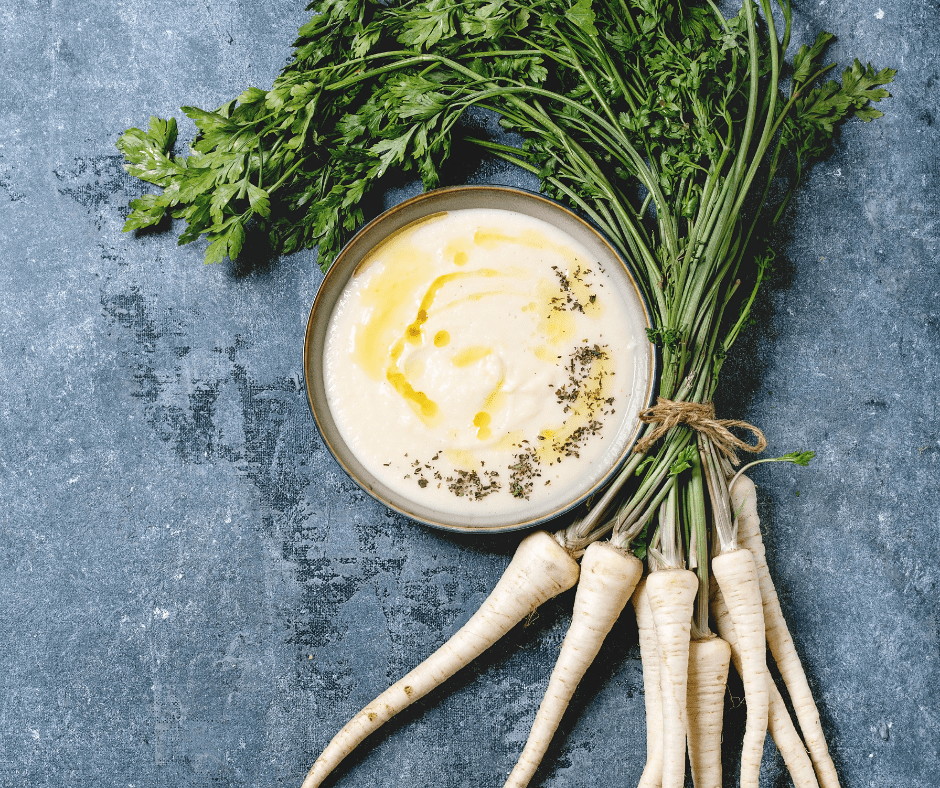
Roasted Parsnip Cream Sauce
Ingredients
- ½ lb parsnips peeled and cut into 1” pieces
- 1 large shallot thickly sliced crosswise
- 2 large cloves garlic smashed
- ⅓ cup olive oil
- ¾ cup sour cream see our anti-inflammatory recipe in Notes below
- 3 Tbsp fresh lemon juice
- ½ - ¾ cup hot water
- Salt and pepper as needed
Instructions
- Preheat oven to 425°F.
- Toss the parsnips, shallot and garlic with the oil on a large, rimmed baking sheet. Spread the vegetables out in a single layer. Roast until the parsnips are tender and light brown in spots, about 20-25 minutes.
- Scrape the vegetables and any juices into a blender or food processor. Add the sour cream, lemon juice and ½ cup hot water. Puree on high until smooth, about 1 minute. Add more hot water as needed to loosen the sauce. Season with salt and pepper if needed.
Notes
#parsnip #recipe #AntiInflammatory #health #nutrition
If you’re interested in an anti-inflammatory lifestyle and more recipes like this one, check out The Official Anti-Inflammatory Diet Masterclass. Or email us at info@vitalityconsultantsllc.com for more information.


